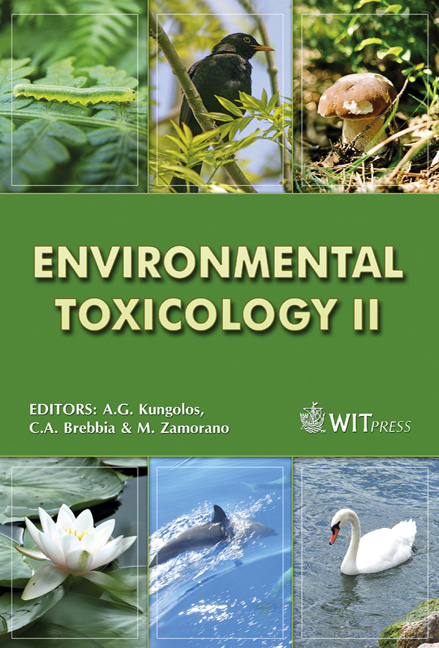Lung Function Parameters And MVOC
Price
Free (open access)
Transaction
Volume
110
Pages
5
Page Range
235 - 239
Published
2008
Size
254 kb
Paper DOI
10.2495/ETOX080251
Copyright
WIT Press
Author(s)
U. E. Rolle-Kampczyk, M. L. Greef, O. Manuwald, M. Rehwagen, O. Herbarth, S. W. Röder & A. Müller
Abstract
The aim of this research was to analyse whether there are associations between lung function parameters and living in mould exposed conditions. Domestic exposure to mould is a common problem nowadays. It is known that mould burden can provoke allergies and unspecific disorders. The role of constituent parts of mould, and in particular of microbial volatile compounds (MVOC), on health is currently partially unclear. 124 persons from the city of Erfurt, Germany (some of whom have been exposed to mould) were investigated within a special consultation-hour with focus on environmental medicine. Simultaneously home visits were carried out. During these visits dust and air samples were collected for further analysis. Among other items, the indoor air concentrations of MVOC as metabolites of mould were determined. The medical checkup included in-depth anamnesis and clinical investigation completed by a detailed lung function test. MVOC data are based on GC-MS measurements of total amounts of 2-Methylfurane, 3-Methylfurane, 2-Methyl-1-Propanol, 2-Pentanol, 3-Methyl-1-Butanol, Dimethyldisulfide, 2-Hexanone, 1-Octene, 2-Heptanone, 2-Octanone, 3-Octanol, Fenchone, α-Terpineol and Thujopsene. It was found that the burden with mould and the burden with MVOC in accommodation is positively associated with changes in lung function parameters. Different lung function parameters were influenced depending on points of view. Generally, more parameters were influenced by looking for associations with mould and the effects found are stronger. An increase of residual volume could be obtained for mould (p=0.001, n=84) and for MVOC (p=0.04, n=76). Furthermore, an OR (95% confidence interval): 3.01 (1.03-9.05) could be found for mould and for MVOC: OR (95% confidence interval): 1.07 (1.01-1.15), both adjusted for daily smoking, general smoking in accommodation, medication against allergies and pulmonary infects during the last four weeks It can be concluded that MVOC are able to contribute to negative health effects caused by mould. Although the described effects appear to be low, it should be taken into account that ORs given for Σ MVOC are per change of 1µg/m³. Therefore an increase of 10 µg/m³ leads to an OR of 1.110 = 2.59. Keywords: domestic mould, MVOC, lung function.
Keywords
domestic mould, MVOC, lung function.





